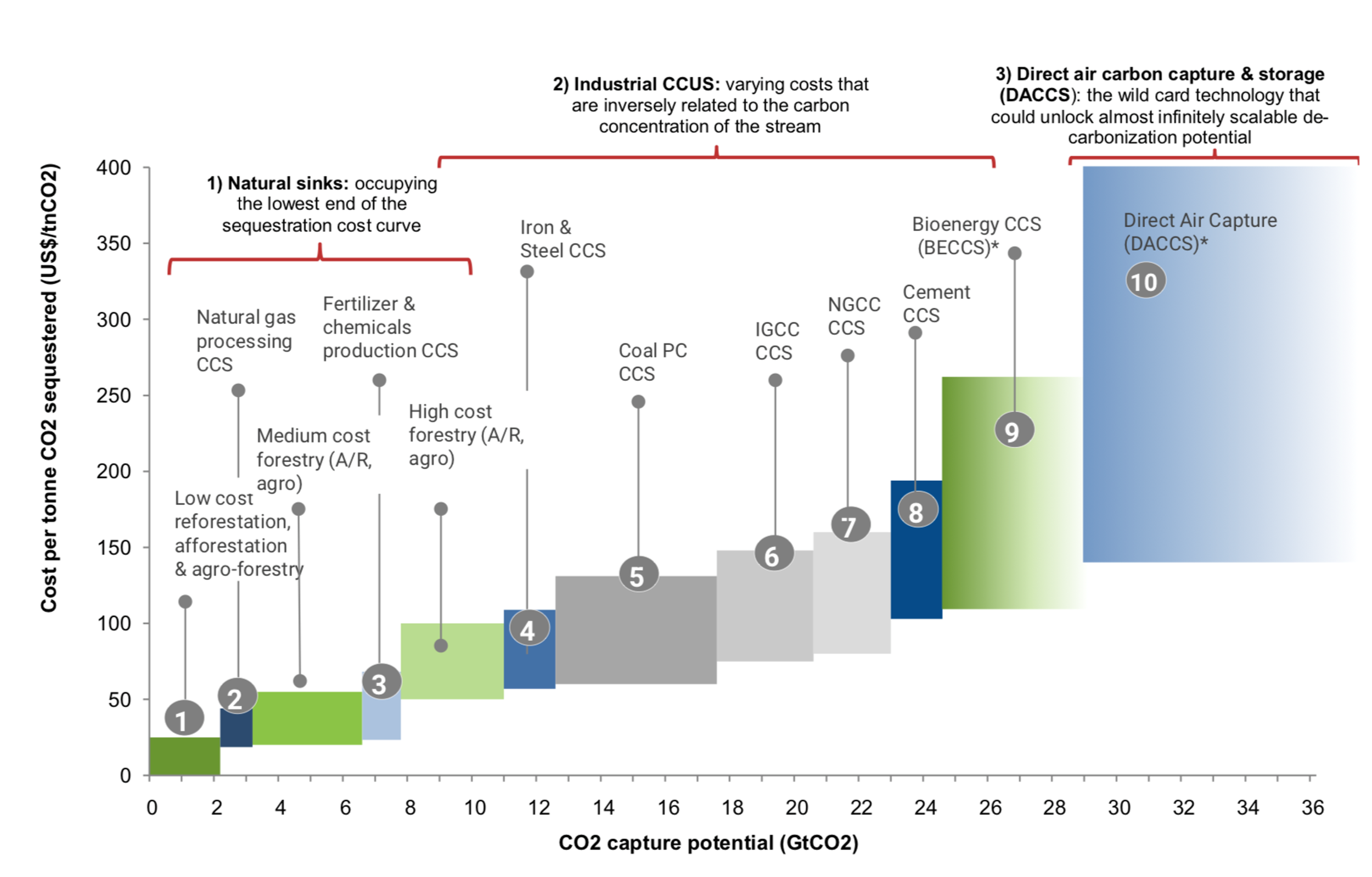Global demand for voluntary carbon credits
Source: NGFS; TSVCM; McKinsey
Demand Drivers
Shareholder pressure
from asset managers and investors to set and meet ambitious/net zero emissions targets
Compliance requirements
to reduce and disclose emissions and describe mitigating actions
Reputational risk
from weak targets or non-compliance
Inability to eliminate all emissions directly
given scale, costs and urgency
Global demand for voluntary carbon credits could increase by a factor of 15 by 2030, and a factor of 100 by 2050 – demand driven by shareholder pressures, regulatory disclosure and technology gaps
Carbon prices expected to rise due to increased demand and marginal cost of abatement
Source: Goldman Sachs
Forestry and natural sinks more generally represent the lowest end of the sequestration cost curve

